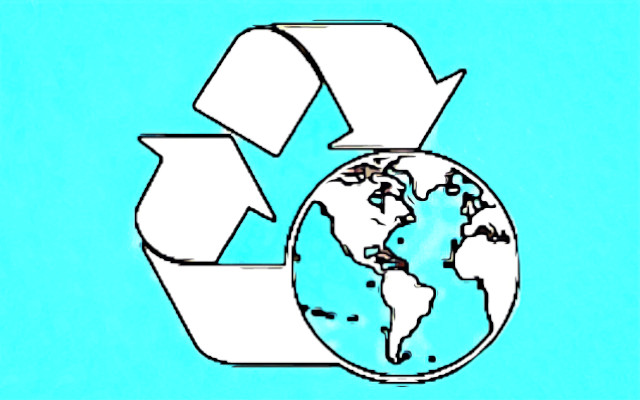So-called upcycling, or ‘ameliorative reuse’-one of the ‘magic words’ related to sustainable development and the circular economy-can also have important applications in the agribusiness supply chain, as well as in other productive sectors. Here is how and why to orient research and development in this direction.
Upcycling, recycling, downcycling
The concept of ‘recovery’ of materials is traditionally associated with that of recycling. That ranks third on Lansink’s scale, after ‘reduction’ and ‘reuse,’ in the so-called hierarchy of uses. (1) A more precise analysis allows us to distinguish three recovery hypotheses, in relation to the processes where the materials are reused:
1) upcycling. The reclaimed material is ‘elevated’ to a production category of higher rank (in terms of intrinsic value and/or added value) than the original one, or at least than the usual destination. (2) From fruit and vegetable processing by-products, for example, phytocompounds can be extracted or made antimicrobial and for food, medicinal and pharmaceutical uses),
2) recycling. In this case, the materials are used in the same production sector or otherwise serve the same function. Some examples:
– mechanically separated meat (from slaughter residues) maintains a food, rather than feed, fate,
– unsold dishes at the end of the day can be delivered at a good price at closing time (e.g.
Too Good to Go
) or to charitable organizations (e.g., Food Bank) which also collect expiring products for distribution to the needy, (3)
3) downcycling. Instead, the more entrenched and usual assumptions pertain to the reuse of scrap and returns (e.g., unsold goods and nonconformities compatible with subordinate uses) in lower value-added production. Be they complementary – e.g. from food to feed – or different. Such as hemp fibers used in green building and bioplastics.
Upcycling, the leap of scale
Upcycling, on closer inspection, can enable a real leap in scale. All the more so where it allows for reduced consumption of traditional raw materials and thus of the resources required to produce them. Some simple examples:
– Use of protein cake (residues from the extraction of oils from seeds, e.g., soybean, sunflower) to produce various foods, rather than just feed materials, (4)
– Reuse of spent grain (wort filtration residue, in brewing, rich in insoluble fiber) to make dough and baked goods with prebiotic action, (5)
– Use of dietary fiber contained in almond skins to improve nutritional profiles and add functionality to cookies. (6)
Water and energy in turn can be the object of systemic ‘ameliorative reuse’. Building a dam like the one needed in Vetto (RE), for example, allows clean water to be put to drinking and irrigation uses instead of being dispersed, while at the same time producing energy.
Consumer attitudes
The association of ideas between ‘reuse’ and ‘food’ may meet with resistance from consumers, in the face of fears that the products may be of lower quality than traditional ones. (7) Where nutritional and socio-environmental benefits are evident and shareable through clear information, the perspective changes.
Young people especially can accept these products, precisely because they express an effective contribution to #SDG12, sustainable production and consumption. (8) The labeling of these types of products should therefore focus on the two drivers of choice, environment and nutrition. The use of synthetic and recognized information codes-such as the NutriScore, the
Eco-Score
and the organic logo can be of great help. (9)
Equity and rules
ConsumAtors, as the latest Coop reports show, are increasingly attentive to social sustainability and thus to fairness in the supply chain, toward producers and workers. They are concerned about the climate, but also about the economy. Innovative products derived from upcycling must therefore meet criteria of transparency and fairness in the value chain, from farm to fork. (10)
The rules to be applied to productions that include upcycling practices are, of course, subject to the general rules on process and product safety in the Hygiene Package (EC reg. 852, 853/04 et seq.), https://www.greatitalianfoodtrade.it/sicurezza/reg-ue-2081-382-cultura-della-sicurezza-redistribuzione-alimenti-gestione-allergeni/. Without neglecting the possible application of reg. EU 2015/2283 on Novel Food to genuinely innovative processes, substances and foods. (11)
Dario Dongo and Andrea Adelmo Della Penna
Notes
(1) The term ‘hierarchy of uses’ on closer inspection is more appropriate than the traditional term ‘hierarchy of wastes,’ taking into account the material destinations that are aspired to be favored. In both cases of reuse and recycling, the materials are not in fact waste, since they are precisely not intended to be discarded but to be reintroduced into production cycles
(2) Spratt et al. (2020). Defining Upcycled Food Products. Journal of Culinary Science & Technology, https://doi.org/10.1080/15428052.2020.1790074
(3) Rondeau et al. (2020). Understanding Motivations for Volunteering in Food Insecurity and Food Upcycling Projects. Social Sciences 9:27, https://doi.org/10.3390/socsci9030027
(4) Grasso et al. (2020). Quality of muffins enriched with upcycled defatted sunflower seed flour. LWT – Food Science and Technology 119:108893, https://doi.org/10.1016/j.lwt.2019.108893
(5) Nocente et al. (2019). Upcycling of brewers’ spent grain by production of dry pasta with higher nutritional potential. LWT – Food Science and Technology 114:108421, https://doi.org/10.1016/j.lwt.2019.108421
(6) Pasqualone et al. (2020). Use of Almond Skins to Improve Nutritional and Functional Properties of Biscuits: An Example of Upcycling. Foods 9:1705, https://doi.org/10.3390/foods9111705
(7) Aschemann-Witzel et al. (2021). Upcycled by-product use in agri-food systems from a consumer perspective: A review of what we know, and what is missing. Technological Forecasting & Social Change 168:120749, https://doi.org/10.1016/j.techfore.2021.120749
(8) Asioli et al. (2021). Do consumers value food products containing upcycled ingredients? The effect of nutritional and environmental information. Food Quality and Preference 91:104194, https://doi.org/10.1016/j.foodqual.2021.104194
(9) Rondoni et al. (2021). Consumers behavior toward carbon footprint labels on food: A review of the literature and discussion of industry implications. Journal of Cleaner Production 301:127031, https://doi.org/10.1016/j.jclepro.2021.127031
(10) Peschel et al. (2020). Sell more for less or less for more? The role of transparency in consumer response to upcycled food products. Journal of Cleaner Production 273:122884, https://doi.org/10.1016/j.jclepro.2020.122884
(11) Grasso et al. (2020). Consumer preferences for upcycled ingredients: A case study with biscuits. Food Quality and Preference 84:103951, https://doi.org/10.1016/j.foodqual.2020.103951





